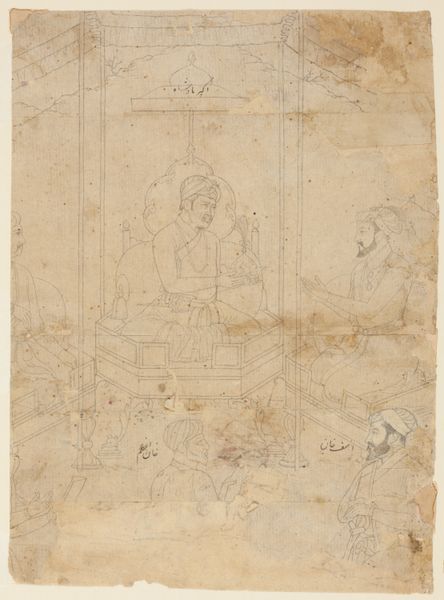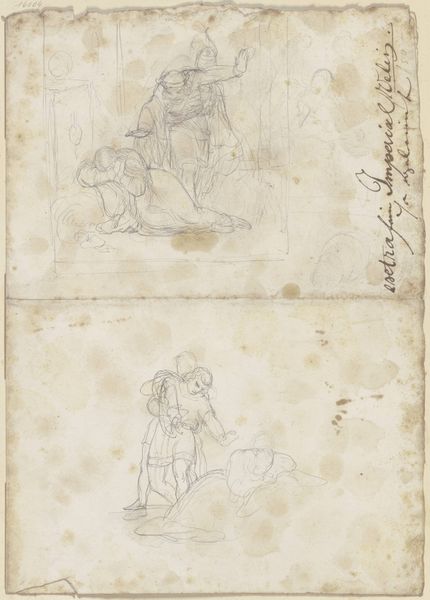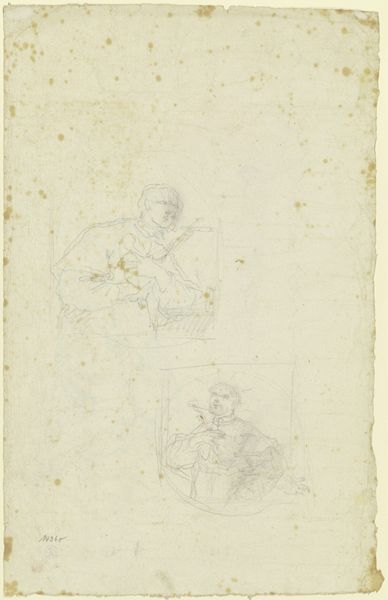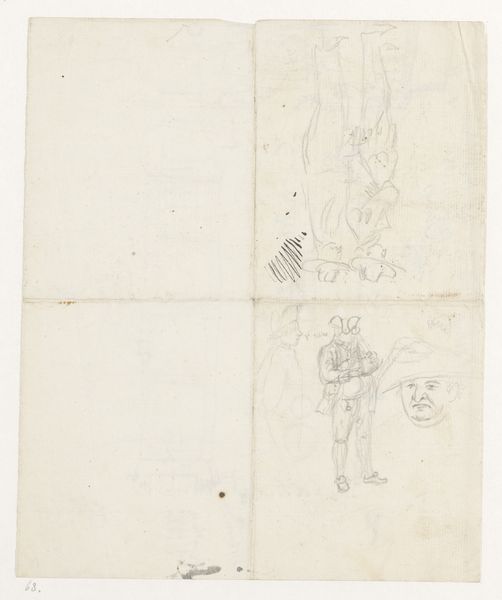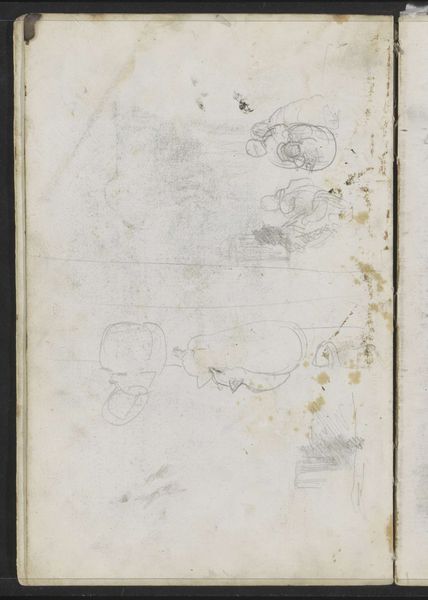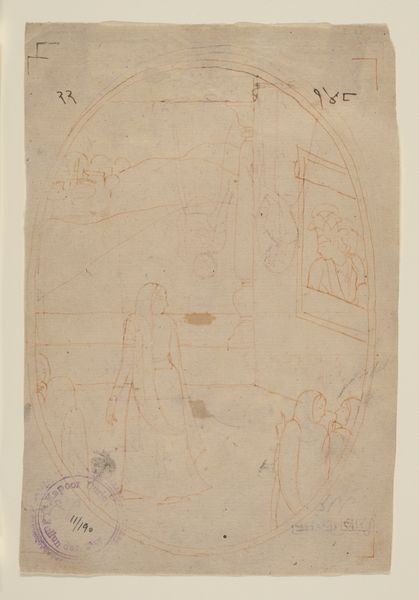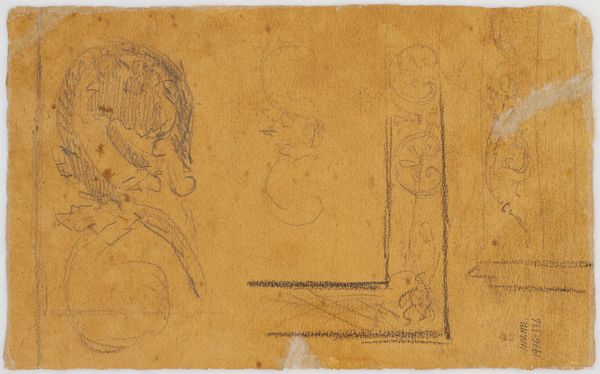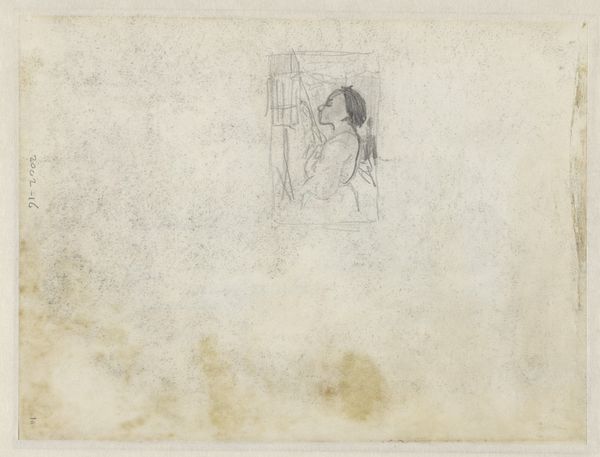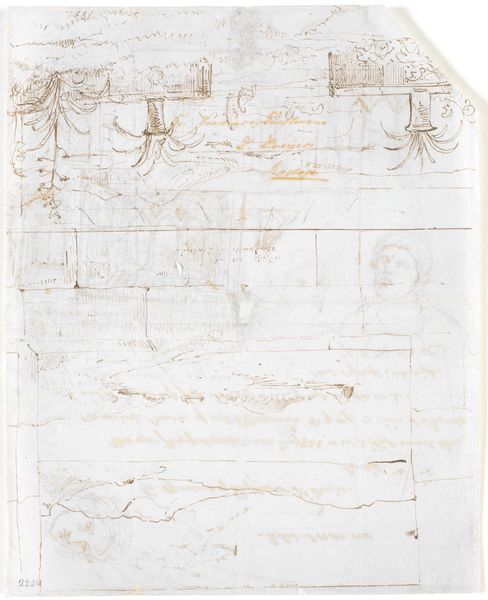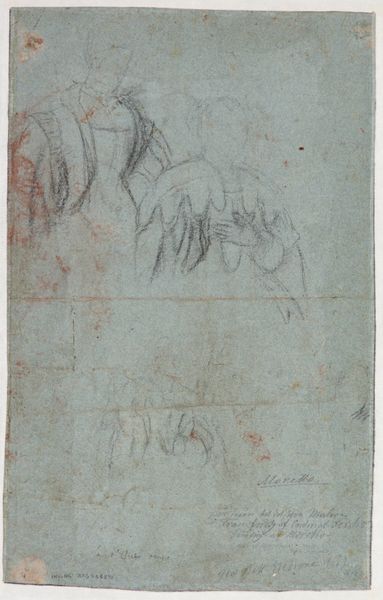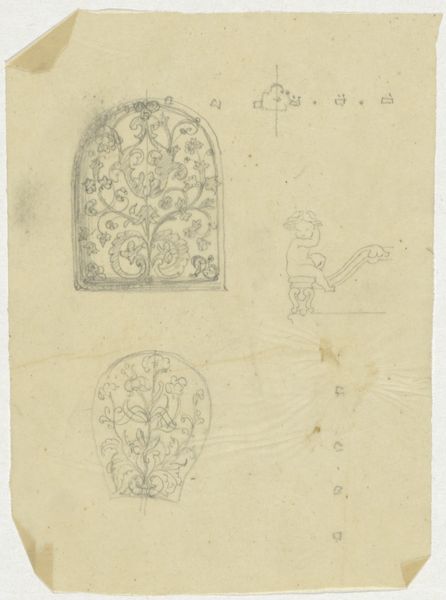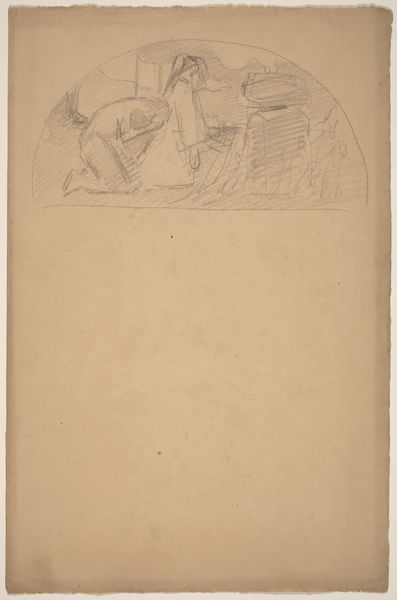
drawing, paper, pencil
#
portrait
#
drawing
#
figuration
#
paper
#
pencil
Copyright: Public Domain
Curator: Welcome. Here we have Fritz Bamberger's pencil drawing, "Studienblatt: Mädchen mit Kind sowie eine zeichnende Frau," or "Study Sheet: Girl with Child and a Woman Drawing." It's held at the Städel Museum. Editor: It feels incredibly intimate. There's something vulnerable in these sketches, almost like witnessing a private moment between the artist and his subjects. The soft pencil lines and aged paper create a sense of delicate ephemerality. Curator: Precisely. Notice the composition. Two distinct studies are arranged on a single sheet: the upper depicting a girl with a child, perhaps her younger sibling, posed in what appears to be a formal portrait, contrasted by the drawing of a female figure bent over her work, holding tools. It displays a sort of comparative exercise in style. Editor: The juxtaposition of those images speaks volumes about societal roles, don’t you think? A woman's primary value linked to familial care, against her individual agency displayed through creative activity and intellect. Was Bamberger challenging that notion, I wonder? Curator: One can read that in it, but also, it highlights the very act of representation. In the portrait study, figures are posed and observed passively; and in the second study, one acts as author of the piece through the depiction of artistic practice. I see it less as judgement than it is examination. Editor: Maybe so. But the contrast itself prompts consideration, I find that compelling. How each representation dictates how each figure can or should exist in their respective space or setting. Consider, too, the absence of sharp line or strong dark-and-light contrast which allows the subjects' inherent dignity to speak subtly from each sketched line. Curator: Yes, the pencil medium and sketchy technique gives each character a provisional feel. And the unfinished state of the sheet further supports a view of an exploratory work about observing life, rather than delivering social commentary. Editor: Or perhaps, the inconclusiveness echoes how fraught those prescribed societal limitations truly were for women coming into a broader space within modernity? It certainly encourages a dialogue around identity, creative power, and representational choices of women in 19th-century domestic life. Curator: I think the strength here relies on its skillful representation using light. Its sensitivity of the study makes me pause to consider it in a formalistic way, above all. Editor: I appreciate its quiet potency as a cultural document, both beautiful and profoundly engaged. It leaves me wondering what her artwork looks like…!
Comments
No comments
Be the first to comment and join the conversation on the ultimate creative platform.
